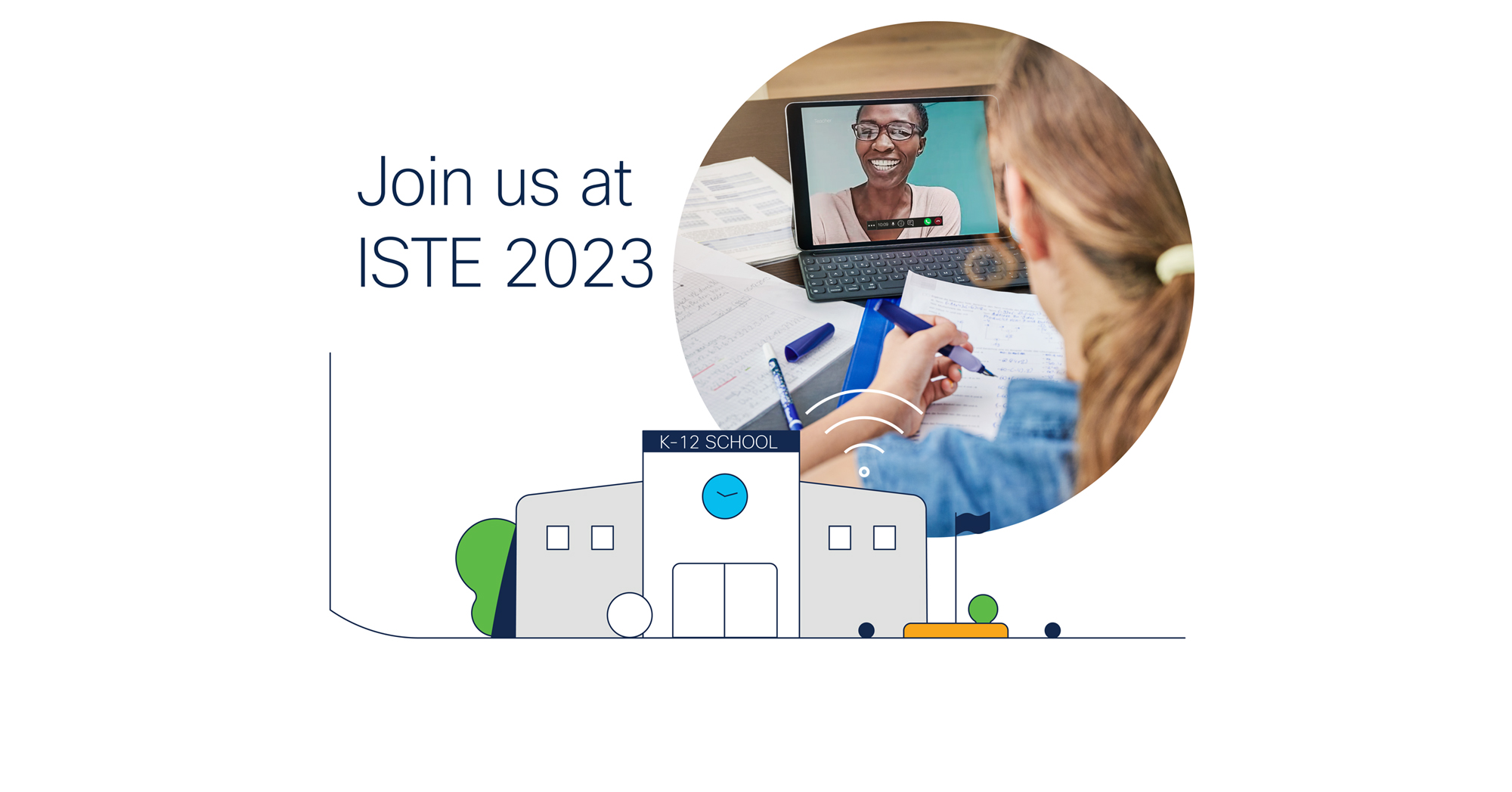Building Bridges to a Sustainable Future

Rethinking and reimagining education to help the world create classrooms through a secure and simplified network is the power of Cisco. As ISTE 2023 nears, we’re focused on helping educational institutions create the classrooms of the future, so they can set their students and staff up for success.
Models of education are evolving to meet evolving needs
As work environments change to flexible and hybrid work, families are asking elementary and secondary schools to provide programs that also include hybrid models for learning that allow for flexibility and choice.
Schools are providing a continuum of learning environments such as blended, remote/online, and hybrid/hyflex models as they continue to evolve their programs to include various models of learning (more here). Through this evolution, educational institutions can personalize programs that address individual student needs while continuing to meet the staffing needs of faculty and technical staff. The need for highly qualified faculty and staff is of great concern and it is through flexible models that they are adjusting to meet the demands.
The school network is indispensable
Wired and wireless access to the Internet as well as necessary applications for business, curriculum, and data are just a few examples of how important the network has become. Each and every department relies on network connectivity. The network is so critical that a redundant network with more than one network service provider is necessary in case of an outage or damage to a (fiber) line. Continuous and reliable connectivity to mission-critical business and education applications, whether accessed from campus or the home environment, has become vital to transforming school infrastructures.
The power of the network – and the ability to have insights and analysis of the network through artificial intelligence and machine learning – allows technical teams efficiency as they continue to reduce complexity and keep the user experience simple and secure.
Increased connectivity means increased risk
With the acceleration of digital technologies creating more connections and application access, there is increased risk across the threat landscape. Because of this, the risk landscape in education is larger than ever. At Cisco, we’re working to protect the physical and virtual security of students, faculty, staff, and data.
Securing personally identifiable information (PII) of students and employees is of utmost importance for a school district. Today’s complex risk requires more than just a firewall to secure the network on the campus. Schools must also defend the network with security software that can be agile and allow for secure connectivity with a Zero Trust approach for determining which users can access their networks and the needed software applications. This software defined access to the network allows for increased security features as teams defend the network.
Creating a better digital experience

The user experience of the students and staff is of great importance as schools re-imagine teaching and learning – and the various business applications to run the school. It can be impacted by a variety of factors, including but not limited to the following:
- Systems that run the facilities (such as HVAC, PoE lighting, user occupancy, intercom/PA systems, security cameras/sensors, and wayfinding capabilities)
- Applications for human resources, student information, purchasing, and learning management
- Transportation/ Busing systems
- Professional development of employees.
Improving the digital experience, application performance, and the physical spaces found on educational campuses are all concerns of today’s school administrators as they align with sustainability goals that are often both achieved and measured via digital tools. As stewards of the facilities and communities in which they serve, the need to reduce operating expenses is paramount as smart technologies are key to success.
Preparing students and teachers for the future
Creating environments for teaching and learning that can engage students and faculty wherever they are requires systems and applications that are agile and user friendly. It’s now time to have the mindset that technical education must be embedded in all grades. That’s why it’s vital that schools incorporate career and technical education programs that teach students the skillsets they’ll need upon entering the workforce.
With all these programs and solutions in place, school districts can confidently:
- Enable educators to be productive in their preferred environment
- Provide continuous and reliable connectivity to mission-critical business and education applications, from campus to home
- Improve availability of digital experiences and application performance to meet teachers’ and students’ demand
- Embed cybersecurity within campus and at home environments.
ISTE, Cisco, and additional resources
Share:

